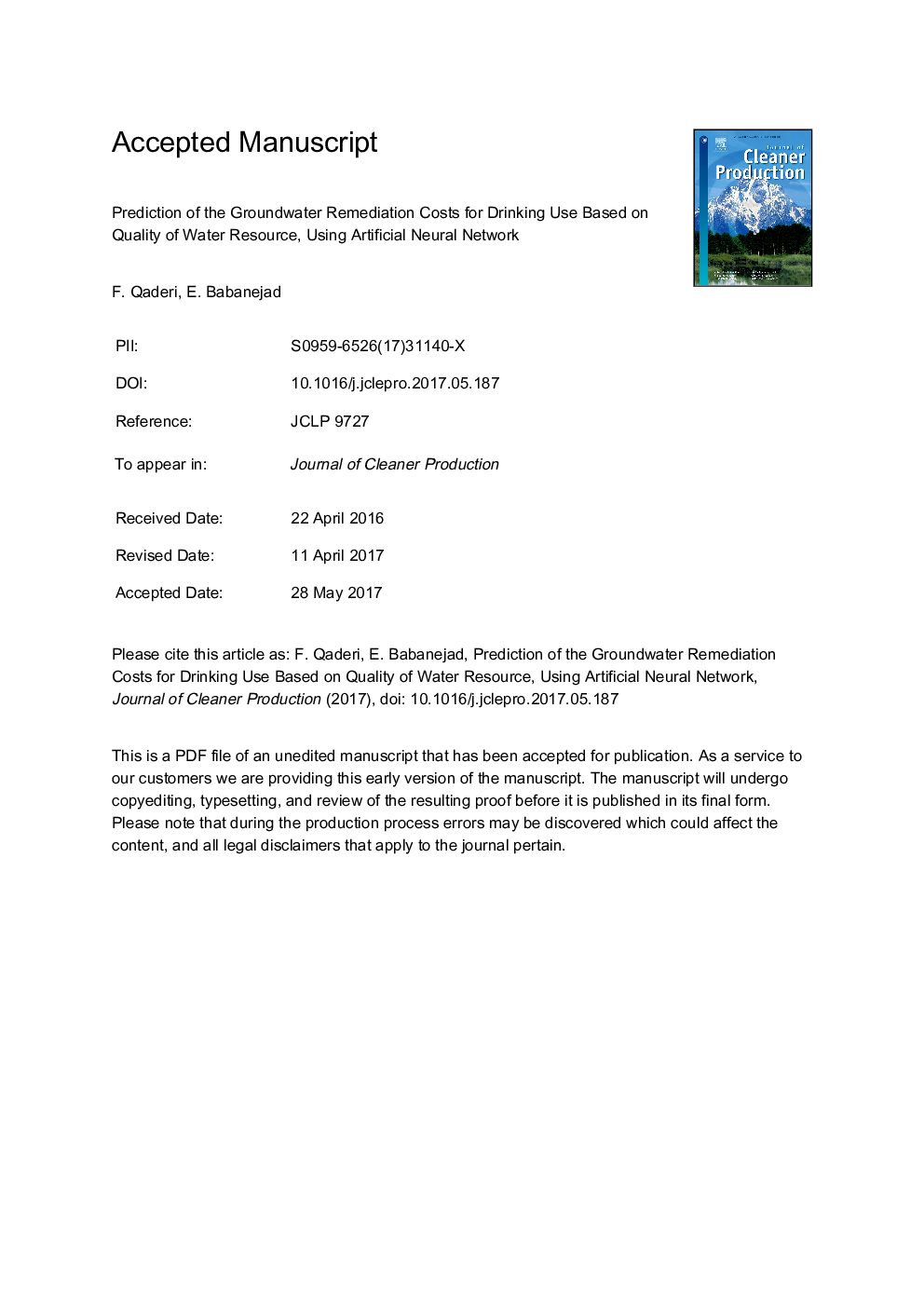| کد مقاله | کد نشریه | سال انتشار | مقاله انگلیسی | نسخه تمام متن |
|---|---|---|---|---|
| 5480884 | 1522093 | 2017 | 21 صفحه PDF | دانلود رایگان |
عنوان انگلیسی مقاله ISI
Prediction of the groundwater remediation costs for drinking use based on quality of water resource, using artificial neural network
ترجمه فارسی عنوان
پیش بینی هزینه های بازسازی آب های زیرزمینی برای استفاده از نوشیدنی بر اساس کیفیت منابع آب، با استفاده از شبکه عصبی مصنوعی
دانلود مقاله + سفارش ترجمه
دانلود مقاله ISI انگلیسی
رایگان برای ایرانیان
کلمات کلیدی
موضوعات مرتبط
مهندسی و علوم پایه
مهندسی انرژی
انرژی های تجدید پذیر، توسعه پایدار و محیط زیست
چکیده انگلیسی
There are several factors involved in selecting a suitable source of drinking water in each region. For instance, the quality and costs of water treatment are sometimes unreasonable due to the pollution of water sources. This has not so far been considered a hindering factor, while a new model can be developed to predict the variations of costs in the future before a project proves barely cost-effective. This paper attempted to employ the statistical data concerning the groundwater quality during a 13-year period in Bareh Bijeh located in Ilam, Iran, so as to propose a new model for predicting the costs of water treatment through reverse osmosis. For this purpose, concentrations of ions K, Na, Mg, Ca, Sr, Ba, CO3, HCO3, NO3, Cl, and SO4 were assumed to be the independent variable. In fact, the concentrations of these ions were the main variables in estimating the water treatment costs through ROSA. Moreover, 20% of the available data about the aquifer was considered test data. The results obtained from the final neural network model trained by Levenberg-Marquardt algorithm were compared against the calculated RMSE through ROSA until the most efficient model was selected. In this study, the optimal model was a neural network with three hidden layers and 18 neurons in the hidden layers, where the RMSE was obtained to be about 2.02%. Based on the trained neural network, the degree of influence of each parameter was determined by the results of the sensitivity analysis, and it was found that calcium and bicarbonate ions had the maximum influence on changes in the costs of treating water for drinking in the region so that these costs decreased by about 150,000 dollars daily when the concentrations of these ions were lowered by 50 percent.
ناشر
Database: Elsevier - ScienceDirect (ساینس دایرکت)
Journal: Journal of Cleaner Production - Volume 161, 10 September 2017, Pages 840-849
Journal: Journal of Cleaner Production - Volume 161, 10 September 2017, Pages 840-849
نویسندگان
F. (Assistant Professor), E. (MSc in Civil and Environmental Engineering),
